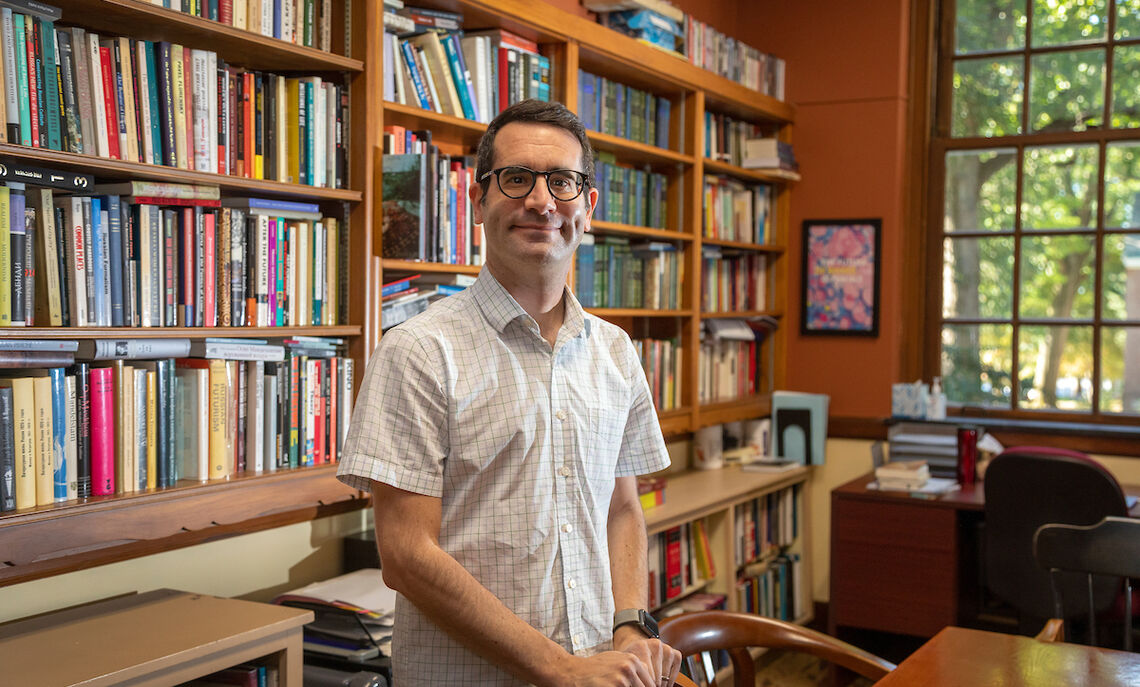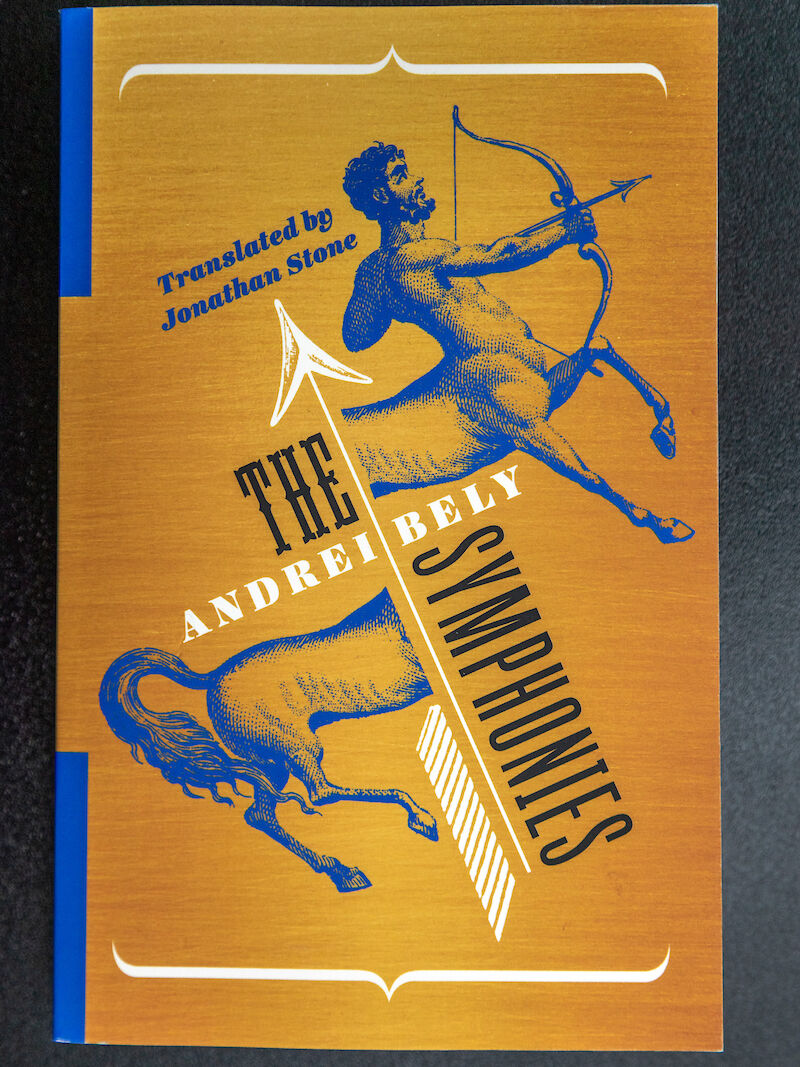F&M Stories
Translating Russian Works in English
In 2018, when Jon Stone embarked on his project to translate a series of Russian stories by poet and novelist Andrei Bely, he started with the assistance of Isabelle Roman ’20, whose eight weeks of work that summer produced a body of research that helped him land a publishing contract.
“She and I worked together on the very early stages of this project,” the Franklin & Marshall College associate professor of Russian and Russian studies said. “Along with my sample translation, the notes that she had come up with were the things that I first took to the publisher.”
This November, Columbia University Press is scheduled to release Stone’s translation of Bely’s “The Symphonies” while in September, which in the literary world is National Translation Month, Stone has written a publisher’s blog about his subject, “A Unicorn in Moscow’s Boulevards.”
“This is the first full-length book that I’ve translated,” Stone said. “I’ve translated a cycle of poems by Joseph Brodsky previously, and the stories in this new book have a lot of that lyrical poetic quality to them even though they’re written as prose. Bely was simultaneously establishing himself as a poet and as a writer of these kind of hybrid stories.”

Professor Jon Stone's project to translate a series of Russian stories started with assistance from Isabelle Roman ’20, whose research work helped him land a publishing contract. Image Credit: Deb Grove
Roman, who studied literature at F&M, was “instrumental in doing some of the initial work on the footnotes, researching the context of stories, noting some of their interesting patterns, and also proofreading the translations as I was drafting them,” Stone said.
While she had taken Russian literature courses as part of her comparative literature studies, Roman neither spoke the language nor studied Russian, he said.
Stone planned to translate only one of the four stories in “Symphonies,” but he said the publisher, after reading their research notes, said, “’The editors would like you to do all four.’ That’s when it went from about a 70-page project to a 500-page project.”
A Russian scholar for more than two decades, Stone discussed the challenges of translating:
What are the challenges of translating another author’s work in another language?
There are a number of prominent challenges. The first is to balance being faithful to what’s in the text and making it sound like artistic English prose. For Russian in particular, there are things that authors can do in the original with word order, with the ways in which sentences are structured, that you can’t easily reproduce in English without it sounding very strange. It’s about finding a happy medium between the meaning and style of the original, but also imagining and projecting and inventing a little bit what the author might sound like had they written in English. And trying to decide where it’s worth diverting from the original to accomplish something stylistically in English. There are some moments where you may have to stray pretty far from the original and insert a lot of your own intuition and there are some moments where, serendipitously, it aligns very nicely.
Why is Bely’s work important to translate?
Because he’s an author who resides at a moment of transition; the works that I translated are from an early part of his career—he wrote them between 1900 to 1908. It’s a moment of a broad cultural shift, of a realization of the ways the world is becoming more modern, more industrialized, more urban—those are all things he thinks about: life in the city. Much in these stories is closely rooted in his own experiences living in Moscow and they’re very much tied to the place he inhabits and some of the characters and people he encountered. They capture the sense of being part of a moment when the nature of daily life is changing and Bely fills these stories with a lot of those small moments of change, whether it’s people pouring asphalt on a street, or newer technologies, or a sense of disconnect between people in a large city. But he also grounds them in old literary forms. These are four distinct works that are linked in terms of their titles and stylistical similarities, but they’re still separate works. The first of these is written as a traditional fairytale with an evil king and a good king and a suffering princess and a love story, so Bely is drawing on these very old classical forms for this first story, but he’s fusing it with this modern sensibility.

Stone’s translation of Andrei Bely’s “The Symphonies." Image Credit: Deb Grove
Related Articles
October 7, 2022
Autocracy and the Challenges to Our Imagination
In the Brooks College House Great Room a few days before Russian-American journalist Masha Gessen addressed a campus audience, a group of students were discussing the writer's works. Franklin & Marshall College offers students a hands-on education that emphasizes close relationships with faculty. Students flourish in a supportive community that treats them as an individual, and their successes continue long after F&M. The College is a national leader in launching students and alumni to opportunities where they make a difference in the community and the world.
February 28, 2022
Faculty, alumni, students react to war in Ukraine
Russia's invasion of Ukraine last week launched what could possibly become the largest land war in Europe since the end of the Second World War in spring 1945. The aggression has launched renewed interest in the humanities — from history to languages to religion — and prompted requests from local, national and international media for interviews and essays from several in the Franklin & Marshall community.
